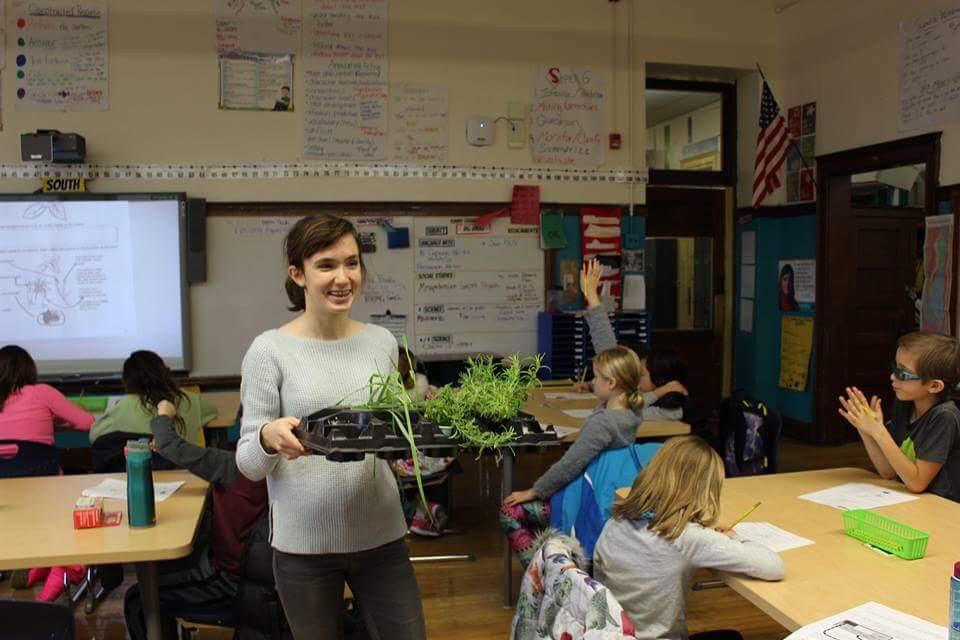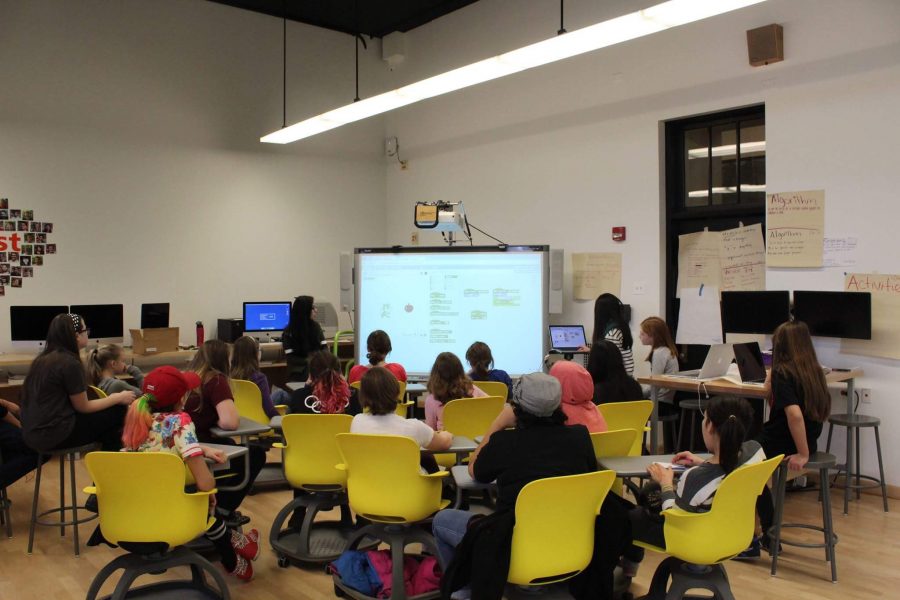“Does anyone know what nitrogen is?”
An eager fourth grader’s hand shoots up into the air. Reciting a description with full-on accuracy, the young learner proceeds to listen earnestly to the Lane Aquaponics students’ presentation about ecology. Creating this sort of interest and wonder — that is the goal of school outreach programs.
Lane prides itself upon a multitude of innovative programs offered in the school. Whether it be in the subject of robotics, engineering, or nature, students are free to explore their choices.
Certain students chose to reach out to fellow classmates — much younger ones. Outreach school programs focus on providing a creative and different curriculum outlet for other students who might not have certain resources available to them.
Incorporating both nature and technology, aquaponics is the term used to describe a system of aquaculture where the waste that fish produce is used to supply nutrients for plants, and in turn, the plants purify water. This is a complicated process many are not aware of, and students Maggie Scholle, Katie Gross, and Amanda Lafferty said they wanted to explain this system to the less-experienced crowd.
Their process began by reaching out to elementary schools, and they chose Hamilton and Audubon Elementary.
“We were delivering mini aquaponic systems to elementary schoolers and the mini systems are a replica [of the ones in the class],” said Scholle, Div. 776.
Not only did students deliver and build these systems for grades four through six, they got to teach the class about aquaculture.
“We had things on the nitrogen cycle and how the fish work and how the plants work,” Scholle said. “Aquaponics creates a system where there is no waste because whatever comes out of the fish is converted by the bacteria in the plant bed and is able to be used by the plants.”
The system remains self-sustained with help from added water the students provide and the feeding of fish.
The process of creating a system and actually having to discuss it in a setting with younger students could pose as a challenge to some, but the Aquaponics class considered the experience a success.
“They were cute,” Gross, Div. 751, said. “They were very eager to learn.”
One fourth grader from Hamilton, named Andrea, said she thought of the experience as a pleasant one. She also said that her favorite part was learning new things that she never knew about before and going home to tell her mom and dad about it. Another student from the same school, Bianca, added that she hopes her class can actually do a project involved with aquaponics.
Aquaponics students remain in contact with the schools in which their systems are located by checking in and helping out with any maintenance that needs to be done.
“We’re already working on implementing some new systems,” Scholle said. “We could help the school make a whole lab but they would have to show a lot of commitment.”
Hamilton Elementary teacher Ms. Julie Simon encouraged further outreach projects because of their direct impact on her own students.
“It was a great way for students to think about what high school looks like in general,” Simon said. “The kids were really interested in the high schoolers themselves — what they’re involved in, like clubs and sports.”
Alongside her Lane class, Aquaponics teacher Ms. Jackson acknowledged the benefits of outreach as well.
“I think that they understood that teaching isn’t as easy as it sometimes looks for their own teachers,” Jackson said.
Aside from Aquaponics, the Computer Science (CS) Department also participates in outreach.
Karolina Rak, Div. 768, participates in a program called Aspira IT that allows middle school girls to further their knowledge with introductory programming classes at Lane. Applications go on throughout winter and the course runs for seven Saturdays, for six hours each session.
“It’s a complete computer science camp just for girls,” Rak said. “Run by girls, taught by girls, and all that. It’s completely immersive and student-run. It can get chaotic, but we’ve found a way to make it work.”
In the previous year, Rak said that the prospective programmers paid $50 for all seven weeks. This year, the fee is $75 because of extra materials and the large estimated amount of participants.
“The program is a lot cheaper than other computer science camps that exist,” Rak said. “Some can go up to $300 or more and that’s a lot.”
These fifth through eighth grade students receive lunch and T-shirts in addition to designated instruction, Rak said. Teachers run workshops and also provide appropriate project kits.
“They even had robots that danced to music,” Rak said.
Computer Science teachers Mr. Law and Ms. Roscoe also explained the advantages of the program.
“I think it’s very helpful to have these positive role models and experiences,” Roscoe said.
Female mentors can provide supportive environments for younger groups. Law also said that having this kind of support is an important part of succeeding with any given project.
“The benefit to me is not financial but rather I get to see my students get opportunities that they normally wouldn’t be exposed to,” Law said.
These opportunities include internships or new means of interest that could arise in the girls leading the program.
An example would be with some of the girls who participated in a three-week summer program with Girls Who Code with local companies at a Google office, Groupon or GE. In regards to students of the past, Law said that some of the girls wound up being engineers at Carnegie.
Law said that what students learn is a “small slice out of a very large pie.” Students cultivating their curiosity through exposure to new topics is what he said is most important to him.
“If you’re going to succeed in the technology world these days outside of school, outside of academia, you have to have a natural curiosity to learn new things,” Law said. “Our primary goal at Lane Tech and this Computer Science Department as a whole is to help our kids learn how to learn.”

